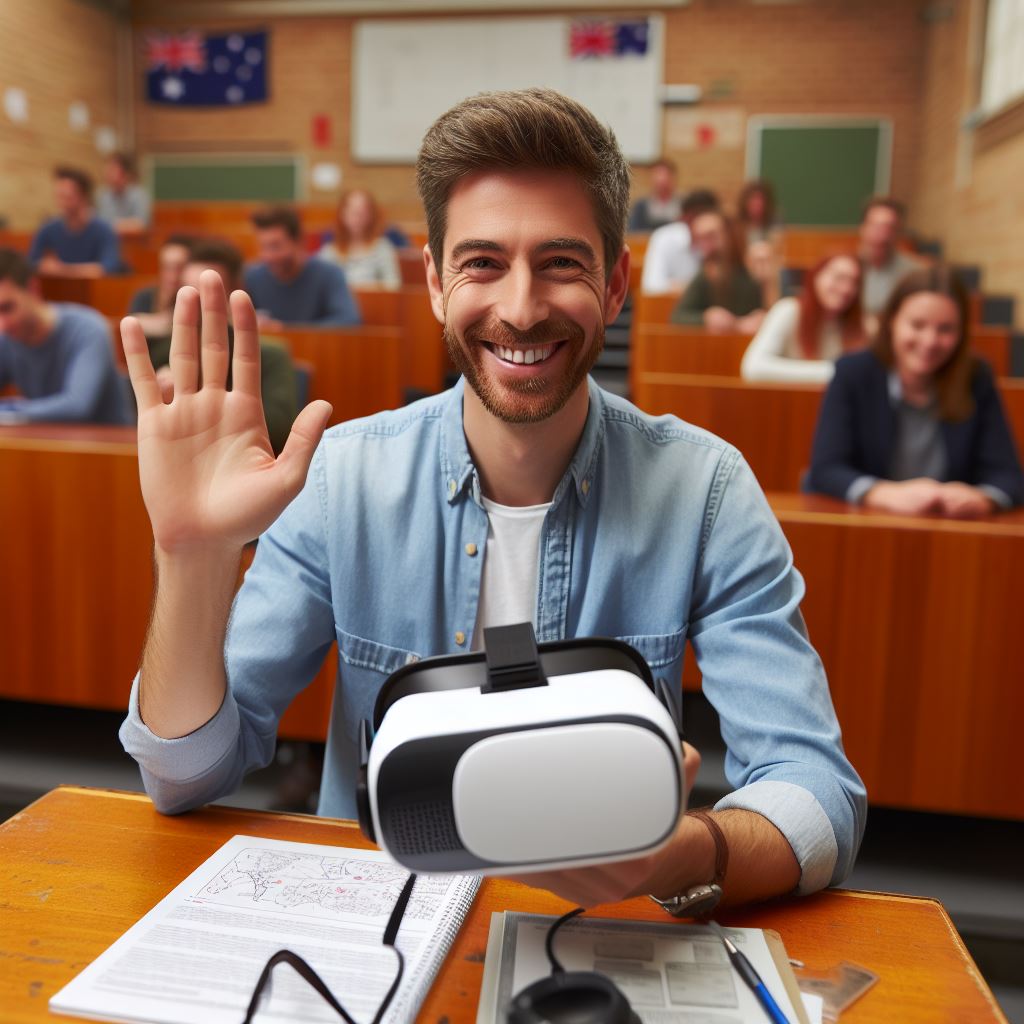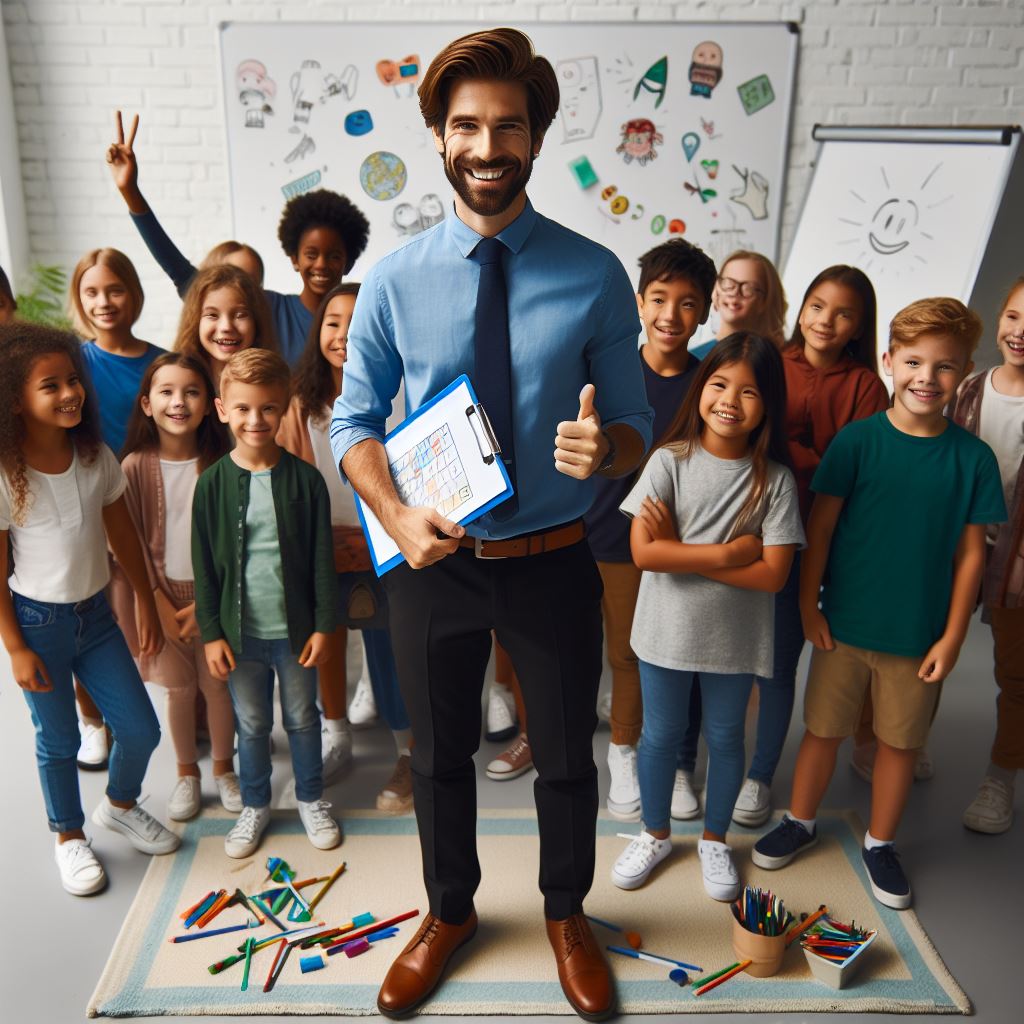Introduction
In the dynamic realm of education, the future beckons with unprecedented transformations.
Australian lecturers, at the forefront of this evolution, offer a unique lens into what lies ahead.
A. The Future Unveiled
- Education is on the brink of a paradigm shift.
- Technological advances redefine the learning landscape.
- Global challenges demand innovative educational approaches.
B. Aussie Lecturers Speak
- Australian educators shape the future discourse.
- Their insights illuminate the evolving educational panorama.
- A localized perspective informs global educational trends.
In this section, we delve into the forward-looking views of Aussie lecturers, exploring their thoughts on educational innovation, technology integration, and the changing role of educators.
The journey promises a rich tapestry of ideas, where the Australian academic perspective paints a vivid picture of the future of education.
As we navigate through their insights, a compelling narrative unfolds, presenting a vision that transcends borders and resonates with the transformative spirit of the times.
Shift Towards Online Education
A. The increasing popularity of online education
The increasing popularity of online education in Australia has led to significant changes in the role of lecturers.
As technology continues to advance, more students are opting for the convenience of learning from home and universities are adapting to meet this growing demand.
B. How Australian lecturers have adapted to teaching online
So, how have Australian lecturers adapted to teaching online?
- Embracing technology: Lecturers have had to become proficient in various online platforms and tools to effectively deliver their courses.
They have had to learn how to navigate virtual classrooms, create engaging multimedia content, and utilize interactive learning activities. - Redefining communication: Online education requires different modes of communication compared to traditional face-to-face teaching.
Lecturers have had to find ways to connect and engage with their students through online discussions, email, and video conferences. - Providing flexible access: Online education offers flexibility by allowing students to access course materials and lectures at their own convenience.
Lecturers have had to ensure that course materials are available online and can be easily accessed by students. - Utilizing multimedia resources: Lecturers now have the opportunity to enhance their teaching with multimedia resources such as videos, podcasts, and interactive simulations. These resources can help students grasp complex concepts more effectively.
- Adapting assessments: Assessing online students requires a different approach. Lecturers have had to design assessments that can be completed remotely, such as online quizzes, virtual presentations, and collaborative projects.
C. Advantages and disadvantages of online education from their perspective
So, what are the advantages and disadvantages of online education from the perspective of Australian lecturers?
Advantages
- Expanded reach: Online education allows lecturers to reach a much larger audience beyond their physical location. They can attract students from different cities or even countries.
- Flexibility: Lecturers appreciate the flexibility that online teaching offers. They can work from anywhere and at their own pace.
- Improved student engagement: Online platforms provide various tools to engage students actively through discussions, polls, and interactive activities.
- Enhanced teaching resources: Lecturers have access to a wide range of multimedia resources to enhance their teaching and provide more engaging content.
- Efficient grading and feedback: Online platforms often have integrated grading systems that streamline the process for lecturers. Feedback can also be provided more quickly and easily.
Disadvantages
- Lack of face-to-face interaction: Online education lacks the personal connection and immediate feedback that traditional classrooms offer.
This can make it difficult for lecturers to gauge students’ understanding and address individual needs. - Technical challenges: Online teaching relies heavily on technology, and technical issues can arise, disrupting the learning process. Lecturers need to be prepared for such challenges and have backup plans in place.
- Increased workload: Transitioning to online teaching can be time-consuming and require extra effort in creating and managing online content. Lecturers may find themselves working longer hours than before.
- Limited practical experience: Certain subjects and disciplines require hands-on experience, which can be challenging to replicate in an online setting. Lecturers may need to find creative ways to provide practical knowledge to students.
- Isolation: Teaching online can sometimes be isolating, as there is less interaction with colleagues and students. Lecturers may miss the sense of community and collaboration found in traditional classrooms.
Despite the challenges, Australian lecturers have embraced the shift towards online education and continuously strive to deliver quality learning experiences to their students.
They utilize the advantages offered by online platforms while finding solutions to overcome the disadvantages.
As technology continues to evolve, lecturers will continue to adapt and refine their online teaching strategies.
The future of education in Australia is undoubtedly moving towards a more digital landscape, and lecturers play a vital role in ensuring its success.
Read: Career Path: Becoming a Uni Lecturer in Australia
Emerging Technologies in the Classroom
In today’s digitally driven world, technology has become an integral part of almost every aspect of our lives, including education.
As the future of education continues to evolve, Aussie lecturers are embracing emerging technologies to enhance the learning experience and prepare students for the challenges and opportunities of tomorrow.
A. The role of technology in education
- Technology is revolutionizing the way education is delivered, allowing students to access information anytime and anywhere.
- Online learning platforms and virtual classrooms enable students to collaborate with peers from different parts of the world.
- Distance education has become more effective with the use of videoconferencing and interactive online resources.
- Technology-enhanced classrooms provide students with personalized learning experiences tailored to their individual needs and strengths.
B. The latest trends and technologies in Australian classrooms
- Interactive whiteboards are replacing traditional blackboards, enabling lecturers to engage students through multimedia presentations.
- Virtual reality (VR) and augmented reality (AR) are being incorporated into various subjects to provide immersive learning experiences.
- Mobile devices such as tablets and smartphones are being used to access educational apps and digital textbooks.
- Artificial intelligence (AI) is revolutionizing education by automating administrative tasks and providing personalized feedback to students.
C. How lecturers are using technology to enhance learning
- Lecturers are using online platforms to share resources, lecture recordings, and supplementary materials.
- Interactive quizzes and online assessments are allowing lecturers to track students’ progress and provide immediate feedback.
- Virtual field trips and simulated experiments are enhancing practical learning in subjects like science and geography.
- Videoconferencing and online discussion forums enable lecturers to facilitate collaborative learning and foster global perspectives.
With technology rapidly advancing, lecturers understand the importance of keeping up with the latest trends and incorporating them into their teaching methodologies.
By leveraging emerging technologies, lecturers can create engaging and interactive learning environments that prepare students for the future.
However, it is essential to strike a balance between technology and traditional teaching methods.
While technology can enhance learning, face-to-face interactions and physical resources are still crucial for holistic education.
Moreover, the implementation of technology in the classroom requires proper training and support for both lecturers and students.
It is important to ensure that everyone has the necessary skills to utilize technology effectively and adapt to its ever-changing landscape.
In summary, emerging technologies are reshaping the future of education in Australia.
Lecturers are harnessing the power of technology to create dynamic learning environments, foster collaboration, and prepare students for the complexities of the digital age.
By embracing these technologies, Australian classrooms are becoming hubs of innovation and knowledge, driving the education sector towards a bright and exciting future.
Read: Australian Lecturers’ Salaries & Benefits Guide
Changes in Teaching Methods
In recent years, there has been a significant shift in the teaching methods employed by Australian lecturers.
These evolving pedagogical approaches have transformed the traditional lecture-based teaching model into more interactive and collaborative methods.
The impact of these changes on student engagement and learning outcomes has been substantial.
Your Personalized Career Strategy
Unlock your potential with tailored career consulting. Get clear, actionable steps designed for your success. Start now!
Get StartedA. Evolving Pedagogical Approaches
- Lecturers in Australia have recognized the need for innovative teaching techniques.
- They have embraced new approaches that accommodate different learning styles.
- Traditional lectures are no longer the sole focus of classroom interactions.
- Lecturers now prioritize student-centered learning and active participation.
- They encourage students to take responsibility for their own learning.
- Technology has played a vital role in facilitating these evolving pedagogical approaches.
- Online learning platforms, interactive tools, and multimedia resources are commonly integrated into lessons.
B. Shift from Lecture-Based Teaching
- The shift from traditional lecture-based teaching to more interactive methods has been revolutionary.
- Lecturers now utilize a variety of teaching strategies to enhance student engagement.
- Group discussions, case studies, and problem-solving activities are frequently employed.
- Collaborative projects and team-based assignments encourage peer learning and cooperation.
- Flipped classrooms have gained popularity, where students review materials beforehand and actively engage in discussions during class time.
C. Impact on Student Engagement and Learning Outcomes
- These changes in teaching methods have greatly improved student engagement and participation.
- Students feel empowered and motivated to actively contribute to classroom discussions.
- Through collaborative activities, they learn to appreciate diverse perspectives and develop crucial teamwork skills.
- Interactive learning environments foster critical thinking and problem-solving abilities.
- Students also develop better communication skills as they actively interact with their peers and lecturers.
- The shift towards student-centered learning has positively impacted learning outcomes.
- Students have shown a deeper understanding of the subject matter and improved retention of information.
- They are more likely to apply what they have learned to real-life scenarios.
In general, Australian lecturers have embraced evolving pedagogical approaches that prioritize student engagement and active learning.
Through a shift from traditional lecture-based teaching to interactive and collaborative methods, students have been able to actively participate in their education.
This has resulted in enhanced learning outcomes, increased retention of knowledge, and the development of crucial skills necessary for their future careers.
Read: Balancing Teaching & Research: Aussie Lecturers

Explore Further: The Role of a Teacher in Australian Society
Skills Required for Future Careers
Australian lecturers play a vital role in preparing students for a rapidly changing job market.
They believe that certain skills will be crucial for future careers, and are actively integrating them into their teaching practices.
A. Emphasis on critical thinking, problem-solving, and adaptability
Critical thinking is one of the key skills that Australian lecturers emphasize.
They believe that in order for students to be successful in the future, they must be able to analyze and evaluate information critically.
This skill will enable them to make informed decisions and solve complex problems.
Problem-solving is another skill that Australian lecturers believe will be crucial for future careers.
They understand that the ability to identify problems, develop innovative solutions, and implement them effectively is essential in today’s fast-paced and competitive world.
By incorporating problem-solving exercises into their courses, lecturers are equipping students with the skills they need to tackle real-world challenges.
Adaptability is also a skill that Australian lecturers are focusing on.
They recognize that the future job market will require individuals who can quickly adapt to new technologies, industries, and work environments.
Lecturers encourage students to embrace change, learn new skills, and explore diverse perspectives to prepare them for the uncertainties of the future.
To ensure that students acquire these essential skills, Australian lecturers are actively integrating them into their teaching practices.
They design curriculum that promotes critical thinking by encouraging students to analyze, question, and debate concepts.
They also incorporate problem-solving activities, such as case studies and group projects, into their lessons to provide students with hands-on experiences.
B. Lecturers are integrating these skills into their teaching practices
Lecturers encourage students to think beyond their disciplinary boundaries and explore interdisciplinary approaches.
This allows students to develop adaptability by learning different ways of approaching problems and finding innovative solutions.
Lecturers also use technology to enhance teaching methods and prepare students for the digital age.
Furthermore, Australian lecturers collaborate with industry professionals to provide students with real-world experiences.
Guest lectures, internships, and industry placements give students the opportunity to apply their critical thinking, problem-solving, and adaptability skills in professional settings.
In fact, Australian lecturers believe that critical thinking, problem-solving, and adaptability are crucial skills for future careers.
Through their teaching practices, they are actively incorporating these skills into the curriculum to ensure that students are well-prepared for the challenges of the future job market.
Read: Rural vs Urban Teaching: A Comparative Study
You Might Also Like: Working Abroad as an Edu Consultant
Preparing Students for the Future
A. Challenges Australian lecturers face in preparing students for the rapidly changing job market
Australian lecturers face numerous challenges in preparing students for the rapidly changing job market.
The first challenge is the need to stay updated with industry trends, ensuring they provide relevant and current content.
Lecturers also face the challenge of teaching skills that will remain relevant in the face of automation and technology advancements.
Another challenge is the need to foster critical thinking and problem-solving skills, as these are highly valued in the job market.
Additionally, lecturers have to address the changing expectations of employers who seek adaptable and multidisciplinary graduates.
B. Efforts made to bridge the skills gap and enhance employability
To bridge the skills gap and enhance employability, efforts are being made to develop innovative teaching methods.
These methods include collaborative projects, internships, and practical experiences that simulate real-world work environments.
Australian lecturers are also incorporating technology into their teaching to prepare students for the digital age.
Online learning platforms and virtual classrooms provide flexibility and accessibility to students.
Furthermore, guest lectures and industry partnerships expose students to current practices and trends.
Initiatives have been implemented to equip students with necessary skills, such as leadership and communication.
Leadership programs enhance students’ ability to manage and lead teams, preparing them for leadership roles in the future.
Communication workshops assist students in developing effective written and verbal communication skills.
Entrepreneurship programs foster innovation and creativity, enabling students to identify and pursue business opportunities.
Some universities have introduced interdisciplinary degrees, blending subjects to provide students with a broad skill set.
Additionally, career counseling services help students identify their strengths and interests, guiding them towards suitable career paths.
These initiatives aim to prepare students for a diverse and unpredictable job market.
By acquiring a range of skills, students become agile and adaptable, able to navigate different industries.
The goal is to produce graduates who can think critically, problem-solve, and adapt to new technologies.
Ultimately, students are equipped to continuously learn and upskill throughout their careers.
Collaboration between lecturers, industry professionals, and policymakers is crucial for effective skill development.
Regular engagement with industry ensures that educational programs align with current market needs.
Government support is vital in funding initiatives and providing resources to enhance educational offerings.
Through collaboration and innovation, Australian lecturers strive to address the challenges and prepare students for the future.
Conclusion
In this blog post, we have explored the future of education from the perspective of Australian lecturers.
They have identified several trends such as personalized learning, online education, and the use of technology in classrooms.
These changes aim to enhance the learning experience and cater to the needs of individual students.
It is crucial for educators and institutions to adapt to these changes and embrace the evolving landscape of education.
Adapting to the changing landscape of education is of utmost importance.
As technology continues to advance, traditional teaching methods may become obsolete.
To ensure that students receive the best education, lecturers must be open to new strategies and techniques.
This can include incorporating digital tools, using innovative teaching methods, and providing flexible learning options.
It is not just lecturers who need to adapt; students also play a crucial role in their own learning journeys.
They should stay informed about current trends and advancements in education.
This means keeping up with emerging technologies, exploring digital resources, and seeking out opportunities for personal growth.
By being proactive, students can enhance their learning experience and gain a competitive edge in the future job market.
In closing, the future of education is constantly evolving, and it is imperative for everyone involved to stay updated and adaptable.
As lecturers, students, and institutions, we must recognize the importance of embracing change.
By being open to new ideas, utilizing technology effectively, and continuously seeking improvement, we can create a transformative learning environment that benefits all.
Let us embark on this journey together and shape the future of education.




